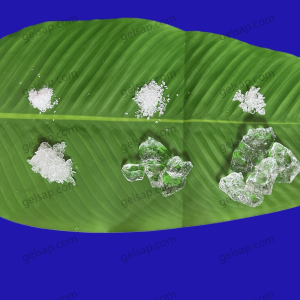Introduction
Полиакрилат калия, a superabsorbent polymer (SAP), has revolutionized various industries with its unique water-absorbing properties. This article delves into the history, development, and diverse applications of potassium polyacrylate, highlighting its significant impact on agriculture, hygiene products, and beyond.

Early Development
The journey of полиакрилат калия began in the 1960s with the development of суперабсорбирующие полимеры by the U.S. Department of Agriculture. Initially, these polymers were intended to improve water retention in soil, thereby enhancing agricultural productivity. The first superabsorbent polymers were based on polyacrylamide, but the introduction of polyacrylate-based SAPs soon followed, owing to their superior water-absorbing capacity and stability.
Advancements in the 1970s and 1980s
The 1970s marked a significant period of advancement for superabsorbent polymers, including potassium polyacrylate. Researchers focused on improving the absorbency, gel strength, and overall performance of these materials. The breakthrough came with the development of cross-linked polyacrylate polymers, which could absorb and retain large amounts of water relative to their mass.
In the 1980s, commercial production of superabsorbent polymers took off, primarily driven by their incorporation into disposable diapers. This decade saw a surge in research aimed at refining the properties of SAPs to suit various applications, leading to the creation of potassium polyacrylate—a form of SAP specifically designed for agricultural use due to its non-toxic nature and ability to improve soil moisture retention.
Modern Developments
The 1990s and early 2000s witnessed significant technological advancements in the production and application of potassium polyacrylate. Innovations in polymer chemistry allowed for the creation of more efficient and environmentally friendly SAPs. Researchers developed methods to enhance the biodegradability of these polymers, addressing environmental concerns associated with their widespread use.
In recent years, potassium polyacrylate has seen a broader range of applications, thanks to ongoing research and development. Modern manufacturing techniques have improved the purity, consistency, and performance of these polymers, making them suitable for a variety of uses beyond agriculture.
Применение Полиакрилат калия
- Agriculture Potassium polyacrylate primary application remains in agriculture, where it is used to improve soil water retention. When mixed with soil, it forms a gel-like substance that can absorb and hold water, reducing the need for frequent irrigation. This is particularly beneficial in arid and semi-arid regions, where water scarcity is a significant issue. By enhancing soil moisture, potassium polyacrylate helps increase crop yields and promotes sustainable farming practices.
- Hygiene Products Building on its origins, potassium polyacrylate is used in a variety of hygiene products, including diapers, adult incontinence products, and feminine hygiene items. Its superabsorbent properties make it ideal for these applications, as it can absorb and lock away large volumes of liquid, keeping surfaces dry and preventing leakage.
- Medical Applications In the medical field, potassium polyacrylate is utilized in wound dressings and surgical pads. Its ability to absorb fluids quickly and efficiently makes it an excellent material for managing wound exudate, promoting faster healing and reducing the risk of infection.
- Environmental Cleanup Potassium polyacrylate has found use in environmental cleanup efforts, particularly in the containment and absorption of chemical spills. Its high absorbency allows it to effectively trap hazardous liquids, preventing their spread and facilitating easier cleanup.
- Horticulture In horticulture, potassium polyacrylate is used in potting soils and hydroponic systems to maintain consistent moisture levels. This ensures that plants receive a steady supply of water, promoting healthier growth and reducing the frequency of watering.
Перспективы на будущее
The future of potassium polyacrylate looks promising, with ongoing research focused on enhancing its performance and expanding its applications. Innovations in nanotechnology and materials science are expected to lead to the development of more advanced superabsorbent polymers with even greater efficiency and environmental compatibility.
Additionally, as the global focus on sustainability intensifies, there is a growing interest in developing biodegradable and eco-friendly versions of potassium polyacrylate. These advancements will not only broaden the scope of its applications but also address environmental concerns, making potassium polyacrylate a key player in sustainable development.
Заключение
Potassium polyacrylate has come a long way since its inception, evolving from a novel agricultural aid to a versatile material with applications across various industries. Its ability to absorb and retain water has made it an invaluable resource in agriculture, hygiene products, medical applications, environmental cleanup, and horticulture. As research and development continue to advance, the potential for potassium polyacrylate to contribute to sustainable and innovative solutions remains vast and exciting.

